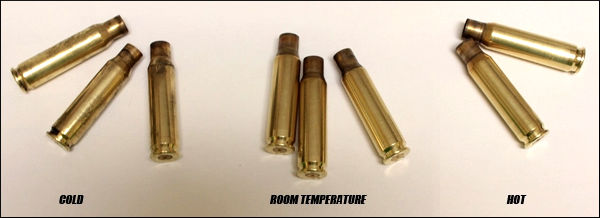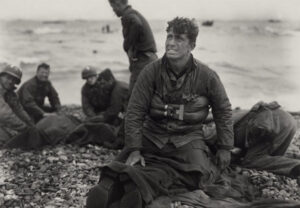June 7th, 2023In this.308 Win Test, 70? In this.308 Win test, 70? The 130.5? The 130.5? F). It’s a big difference…
Summer Solstice is only two weeks away. Most of the country will soon experience peak summer heat. Some ranges in Western states have already experienced temperatures of over 100 degrees F. You should take every effort to keep ammo cool during extreme summer heat. Keep ammo in coolers in the shade whenever possible. Never leave boxes of ammunition out in the sun. Even powders marketed as “temp-stable” can show significant velocity increases at ambient temperatures of 90 degrees or higher. This article explains the effects of temperature extremes, both hot and cold. This article explains how the velocity differences between very hot and very cold ammo can vary greatly. Some powders are more temperature sensitive than others. You cannot extrapolate results from one propellant into another. It is still interesting to see how the recorded velocity changes with variations in ammo temperatures for a.308 win. Written by Sierra Chief Ballistician Tommy Todd
This story was originally published in the Sierra Bullets Blog
I attended the Missouri State F-Class Match a few weeks back. It was a two day event in the summer, and the temperatures were hot on one day and even hotter the next. I shot next to an individual who was relatively new in the sport. He was shooting an almost factory rifle, and he was having fun. However, his scores weren’t as good as he had hoped. Also, he was having pressure issues with the ammunition. I noticed that on a few rounds he had to force the bolt. I spoke with him during a break and gave him a few suggestions that helped his situation. He was able finish the match without any major issues. This ammunition was fine during “normal” testing but it showed issues during a string of 20 shots in the high temperatures we were in. My first suggestion was to keep the ammunition out of direct sunlight and shade it as much a possible. My second suggestion was that he not close the cartridge bolt until he was ready for a shot. He was chambering the round in direct sunlight while waiting for the target to be scored, which can sometimes take a few seconds or even a minute. This allowed the bullets and powder to absorb [heat] in the chamber and build pressure/velocity beyond normal conditions. My recommended changes reduced the pressures to the point that the rifle and cartridge could function normally.
After analyzing the situation, I decided that I would test a rifle/cartridge combo in the Sierra Bullets underground facility to see how temperature changes affect it. I loaded thirty consecutive.30 caliber MatchKing Bullets #2275 from one of our bullet assembly presses into.308 Winchester ammo. I used a powder product from an unnamed manufacturer that is suitable for the.308 Winchester. This load is not the maximum for the cartridge, but it provides consistent velocities for testing. I placed ten cartridges in the freezer to condition. I set ten on my loading table, and because it was cool and overcast the day I conducted this test, I used a floodlight to simulate ammunition heated in the sunlight. This test was fired at 200 yards from a return to battery machine rest. The aiming point for this test was a line drawn at a certain level on a piece of paper. The temperature of the ammunition affected the velocity. The ammunition from the freezer fired at 2451 fps. The ammunition at room temperature shot at 2500fps.The heated ammo shot at 2596fps.The tune-window of this rifle is quite wide, as shown by the accuracy at all three pressure/velocity settings. Notice the shift in the point of impact with the third group. At 200 yards, there is enough movement to cause a miss when shooting at a target or an animal at a longer distance. The pressure and velocity of this load were far enough away from maximum to not cause any overpressure issues, such as a flattened primer or ejector marks in the case head. You will likely see a dramatic difference in your results if you load your ammunition to maximum and then submit it to this test. It is a good idea to test the ammo/firearm under the conditions you will be using it in. It’s a good idea to test your gun and ammunition to see how they react to changes in conditions. This will allow you to make adjustments as necessary. It is important to be cautious when testing your own gun and ammunition combinations. Some powders and cartridges can become unsafe even with small changes in conditions.

















